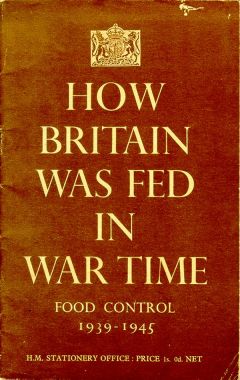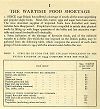

Concentration of Production: this extract describes how food production was concentrated and 'zoned' to increase efficiency.
The Wartime Food Shortage: a description of the effect of rationing on
food consumption patterns.
By the middle of 1941 many of the more highly mechanised food factories had turned over many employees and some of their premises to the production of munitions. It then became necessary to take more organised measures to free factory space and release labour, particularly in those regions where they were most needed for munitions. The food industries were therefore included within the general policy of 'concentration' which the Board of Trade was already applying to other industries... The method was to concentrate an agreed volume of production into a smaller number of factories, and so as far as possible into factories economical of manpower....
Manufacturers in general found it necessary to devote themselves to the production of the simpler lines. In the biscuit industry, for example, the number of varieties produced by any one manufacturer was reduced from as many as 350 before the war to only 20. Manufacturers had also other problems. When one took over another's production, there was, for example, the question of 'brand names'. In the soft drinks industry the manufacturers' wartime association adopted the drastic course of eliminating all brand names 'for the duration' and selling standardises products under such designations as 'Orange Squash S.W.153' the code letters and number being the sole indication of the manufacturer's identity. A similar policy was adopted in the margarine industry.
Economy in the transport of food from production or import points to wholesalers' stores was effected by 'zoning' schemes.... For example, for bulk flour the country was divided into five areas, subdivided into zones, and movement between different zones and different areas was allowed only by permit. For self-raising flour there were ten zones and inter-zone movement was permitted only to specified deficiency zones. For chocolates and sweets there were four practically self-sufficient zones.
The general group of commodities classed as 'groceries and provisions' was distributed under a scheme which divided the country into nine sectors. In general, no first-hand distributor, wholesaler or multiple might buy outside his own sector .... A limit was imposed on the number of wholesalers from whom a retailer might purchase, which reduced the number of small orders and saved much clerical work.
Zoning schemes necessitated a drastic departure from accustomed trading practices. Long-standing connections between manufacturers and wholesalers had to be given up. Wholesalers frequently had to hand over to their pre-war competitors lists of customers to whom they were no longer allowed to deliver. Such transfers often involved the loss - even if only temporarily - of valuable goodwill and it is proof of the desire of the traders to assist the war effort that they were made with so little friction. The housewife also accepted philosophically the disappearance of some of her most cherished branded foods and their replacement by others which she was not necessarily convinced were 'just as good'.
How Britain Was Fed in Wartime, HMSO, 1946, pages 21-22
Back to the top
 |
| Source: How Britain Was Fed in Wartime HMSO, 1946, p1. 1087Kb. |
Since 1940 Britain has suffered a shortage of nearly all the more appetising and popular staple foods. Meat, fish, butter, eggs and sugar have been scarce. The once abundant supplies of imported fruits have dwindled and many varieties have disappeared. People have been compelled to satisfy their physical needs by filling up with larger quantities of the bulky and less attractive vegetable and cereal foodstuffs still obtainable.
Some indication of the shortage of favourite foods, and of the enforced transfer to a duller diet which the war imposed on the British public may be gathered from the following table, which compares the amount of each main group of foods eaten in 1944 with the amount eaten before the war.
Table 1, Supplies of food for the civilian population of the united kingdom in 1944 compared with pre-war
|
food group |
1944 supplies as per cent of pre-war |
|
foods of which consumption has decreased: Butter, oils and fats foods of which consumption has increased: |
85 |
Source: How Britain Was Fed in Wartime HMSO, 1946, p1